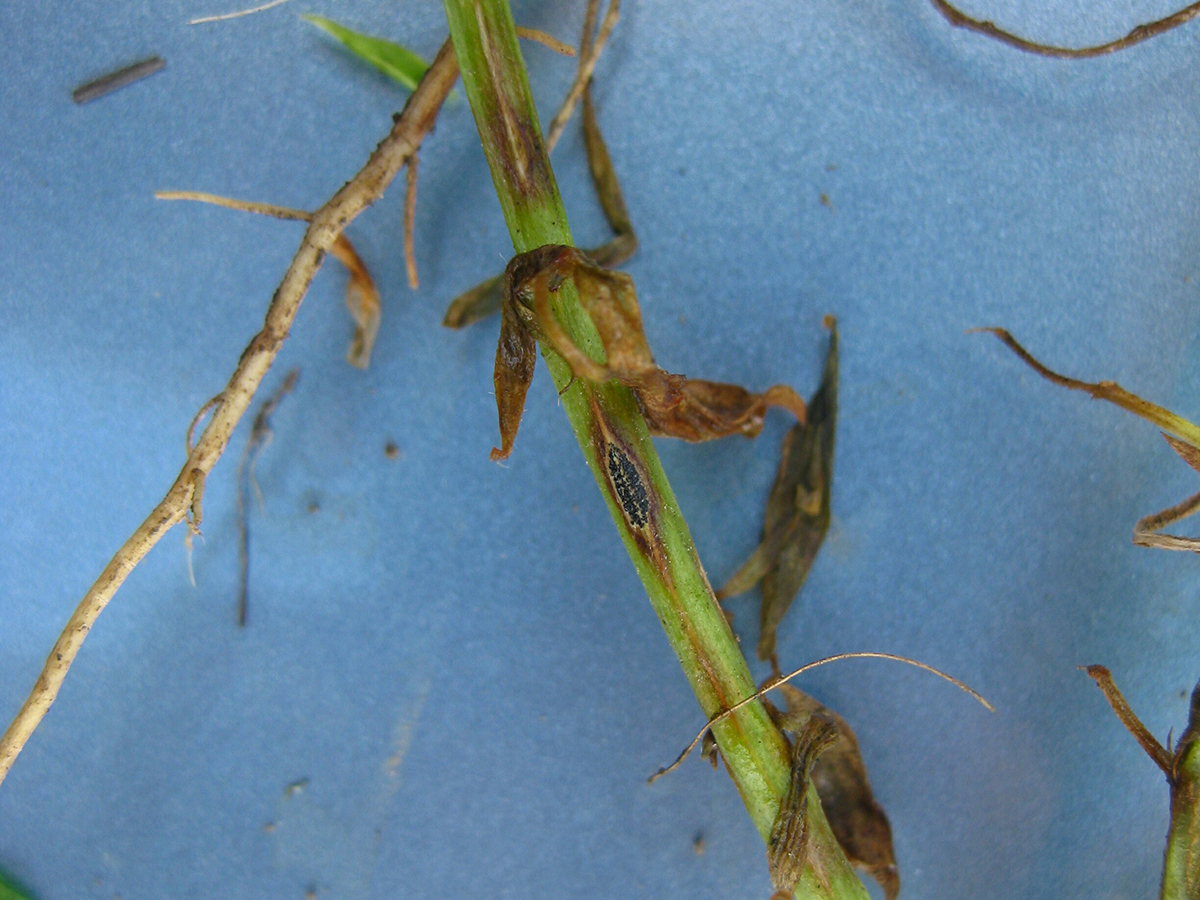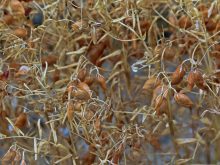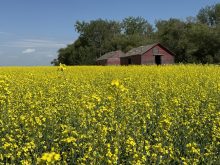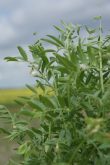With rain and stormy weather hitting a lot of Saskatchewan, the risk of anthracnose in lentils skyrocketed over the weekend of June 14 to 16.
In the first weekly disease map for lentil anthracnose on the Prairie Crop Disease Monitoring Network, risk increased from medium to high for producers in the southwest, southeast, and west central parts of the province due to rainfall and warm temperatures. Two things the fungus has a preference for.
However, just because an area has been labelled as high risk doesn’t mean the overall risk of anthracnose is high.
Read Also

Fertilizer method’s link to emissions studied
A researcher says others studying greenhouse gas emissions aren’t considering how the loss of nitrogen into the atmosphere correlates with fertilizer application or if there is an impact to yield.
“When we think of disease development, we’re thinking disease triangle. You have to have environment, you have to have a host, and you have to have the pathogen,” explained Michael Brown, Saskatchewan Pulse Growers (SPG) agronomy manager for lentils, chickpeas, dry beans, and fenugreek.
“So, what this map’s doing is giving you basically a clear picture on the one point to that triangle with the environment. So, understanding what has previous rainfall been, what’s the relative humidity been, and then what’s kind of the forecast looking like for the next few days out from that map.”
Other risk factors include if a producer runs lentils in a tighter rotation than four years, if a neighbouring field previously had lentils, or if the field for this year’s crop has had lentils before. This will be most common in the south and west central areas of the province, that are typically the largest lentil acres.
But lentil producers in the north central and east central parts of the province will also face risks due to more precipitation during the growing season due to fungus spores spreading via rain splash and wind from infected crop residue.
“We wouldn’t use this map as like a ‘you’re high risk, go spray’ kind of thing,” Brown said. “It’s a, ‘you’re high risk. You should probably get in the field and scout a little more intensely, potentially’.”
For any lentil growers this year, especially those hitting two points of the triangle, he recommends to move anthracnose investigation up as a priority when it comes to field scouting. Depending on other activities on the schedule, producers should consider checking their field every three to five days. Particularly, if they’ve recently had a heavy rain and high humidity.
As such, it’s important to be familiar with the signs of the fungus and what the plant will look like in the early stages as well as later on. On SPG’s website there are photos of the different stages of disease for producers to refer to.
Infection of anthracnose results in cream coloured lesions on leaves and sunken lesions on stems, and first appear on the lower part of the stems and leaves. If the disease is allowed to progress, eventuallly the lower leafs will wilt and the lower stem will turn brown.
Lesions could also have microsclerotia, which appear as tiny black resting bodies. These can be similar to ascochyta, but will be smaller, darker, more numerous, and irregular shapes.
“Considering that it shows up on the lower stems and lower leaves first, you would like to get a fungicide application on the lentils before that canopy closes,” Brown explained. “So you can actually penetrate the canopy and get down low on the stems and get some fungicide activity down there.”
Fungicide labels and agronomists say application to treat anthracnose should be done at the beginning of flower or at the earliest signs of disease. Brown recommends following this, because if a producer identifies disease signs before flowering but doesn’t spray, they’ll be playing catch up.
He also suggests that when selecting a fungicide to be aware of strobilurin sensitivity, sharing that surveys from 2020-22 showed that over 80 per cent of lentil populaltions have some level of resistance to group 11s. With that in mind, it’s important to never use strobilurin fungicide as a standalone and always mix it with another product that will work on anthracnose.
A good product would be a systemic fungicide, as it will move within the plant to target disease on new growth. And to, of course, follow directions on the lablel and perform a follow up 14 days later.
If producers have additional questions on fungicide application, they can consult the fungicide decision checklist from SPG which helps producers to calculate their disease risk by considering factors such as plant stand density, recent rain, future forecast, and plant symptoms. Another point to consider for fungicide application is personal judgement and economics.
“Determining your cost of fungicide application versus what your expectation is for yield and what your expectation is for sale price as well,” said Brown. “So taking that into consideration, if it’s a good looking crop, absolutely do the investment in protecting it. But then you know, if it’s a dry year, and it doesn’t look like it’s going to rain, you’ve got a pretty poor environment for disease development, and the yield doesn’t look that great, then you need to start weighing the factors on on the economics.”
If any producers have additional questions on the disease or are unfamiliar with it in anyway, they can contact SPG or their local agronomists for help and further discussion.
















